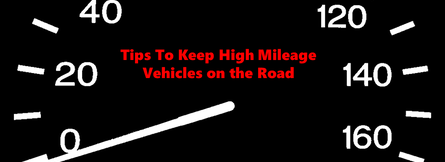
WHAT IS CONSIDERED HIGH-MILEAGE?
Typically, putting 10,000 to 20,000 km on a car per year is viewed as “average” in Singapore. A car that is driven more than that is considered a high-mileage car. A car that has clocked over 120,000 km is also considered to be a high mileage vehicle. However, with proper maintenance, cars can have a life expectancy of about 260,000 km and more.In the 1960s and 1970s, where vehicle odometers would only display up to 99,999 miles (or 160,000 km) before “rolling over” to zeros once again. Now, many vehicle owners can view mileage beyond 1,000,000 km and continue driving the vehicle. This is because automakers are building more durable vehicles.
What problems can come from High Mileage cars?
The engines in the high mileage cars are usually fairly worn out after this point; there could be many different kinds of problems with your engine, especially in a car that hasn’t been properly maintained.
One of the more common issues with high-mileage cars is that the engine is burning oil that could cause severe damage to the engine. The engine needs engine oil to survive. This happens to a high mileage car which has not been properly maintained or used poor quality engine oil.
In addition, gaskets and seals will begin to crack over time and cause oil to leak that causes oil loss more quickly than normal.
HOW TO MAKE A HIGH MILEAGE CAR LAST
Firstly, fix any problems immediately. The low oil pressure light on the vehicle’s dashboard isn’t something that light up often. The low oil pressure light is a warning that there is not enough oil pressure or the engine oil level is too low. Don’t ignore that check engine low oil pressure light or any other issue that arises with your high-mileage car to ensure sufficient lubrication to the engine. Problems don’t just go away – in fact, they usually get worse. So, as soon as you feel, see, or hear something unusual, take your car to your mechanic to have it serviced immediately.
Next, always choose high-quality replacement parts. When it comes to auto parts, you generally get what you pay for. If you want to keep your car on the road, make sure that any worn-out parts are replaced with high-quality options.
Additionally, follow your owner’s maintenance manual. This includes getting your oil changed on time, checking your tire pressure, rotating tires and maintaining your fluids. Ignoring regular maintenance during your car’s early life will lead to larger problems down the road. Oil changes should be part of your regular maintenance routine.
Here are some general guidelines for oil changes:
High-mileage cars are built to last, and have a surprising high amount of life left in them. They just require a little extra care and maintenance with quality engine oils to be able to continue to perform at their best and continue serving your driving needs. It is always important to choose a trusted engine oil with genuine API approval and European EELQMS certification, like TriSonic® UltiMach 100SYN XP FE 10W-40, to ensure optimal performance and engine longevity in a high mileage car.
Trisonic® 100SYN XP FE products are 100% synthetic API SP approved motor oils which are specially formulated to protect your high mileage engine even in the toughest driving conditions, including stop-and-go city driving. It passed ASTM D7216 test which proved the compatibility of Trisonic® 100SYN XP FE fully synthetic motor oils with several elastomer typical of those used in the sealing materials in the engines. It helps the engine maintain its peak performance by protecting it from oil sludge build-up with its seal conditioners and detergents. Most importantly, it reduces the overall wear and tear of the engine and the amount of oil consumed by it, which greatly helps extend its lifespan.
